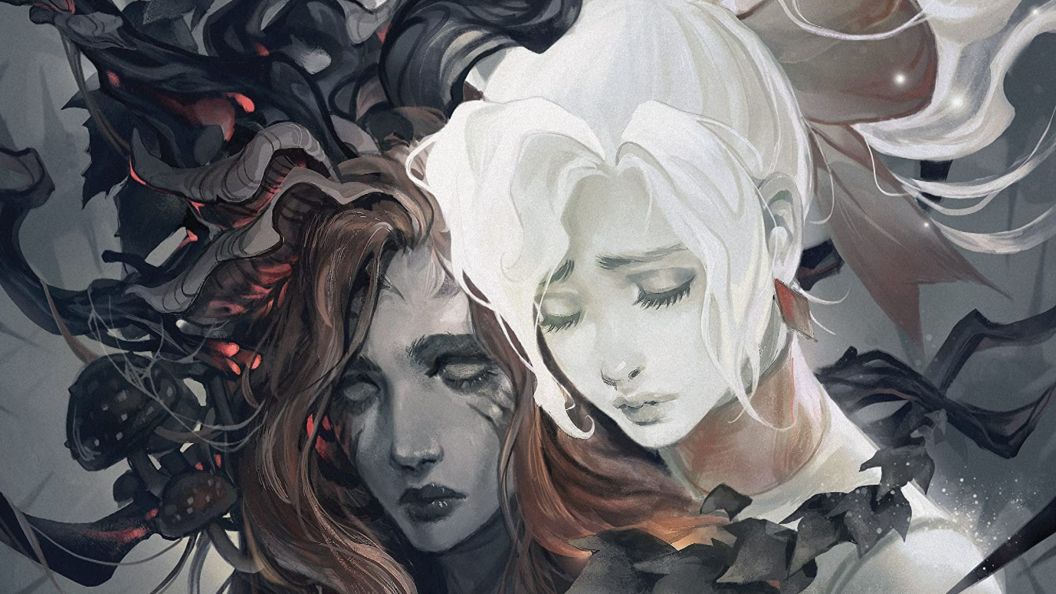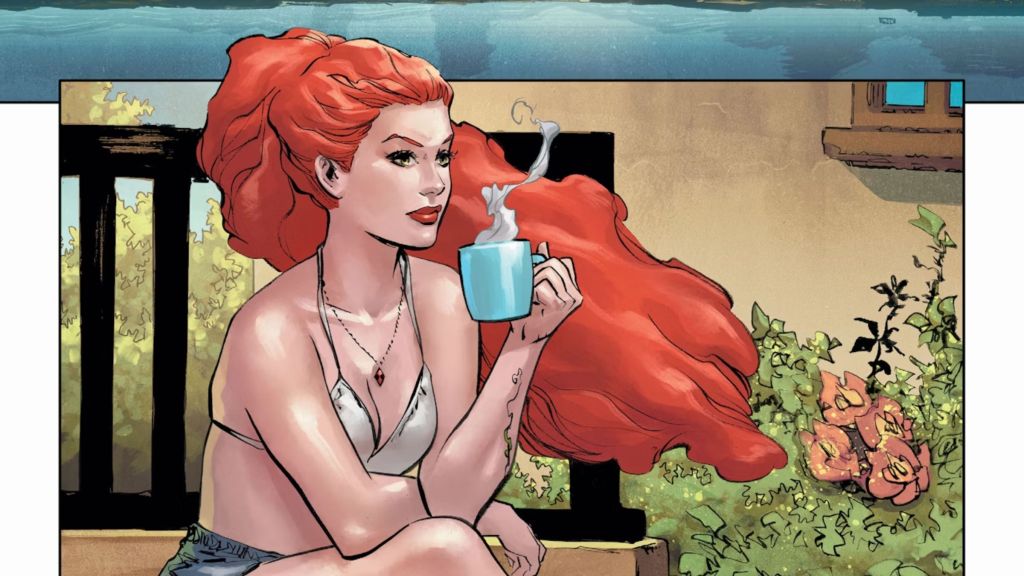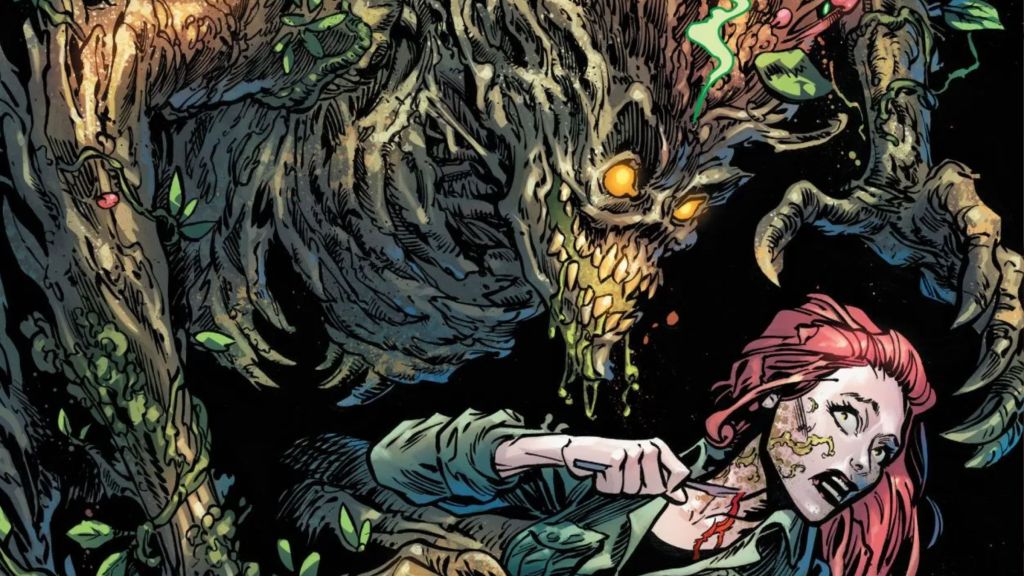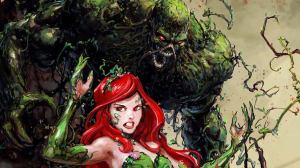
Poison Ivy is a long-standing character of DC Comics. She was first introduced in the 1960s as part of Batman’s Rogues’ Gallery, but it’s safe to say that she’s grown and changed a lot since then. Multiple series have tried to do right by this complex character, but it’s her current solo run that is stealing the show. Poison Ivy’s latest run picked up in 2022, and it has been utterly unafraid to tackle every side of Ivy’s story. Her story is allowed to exist outside of heroes and villains, and while they play an occasional role, it’s clear the story is all about Ivy.
Poison Ivy is an ongoing series written by G. Willow Wilson and illustrated by Marcio Takara. It’s quickly become a must-read series for any Poison Ivy fan, and for the most part, even new readers could dive right into this tale. Notably, the story begins after DC Comics’ Fear State crossover, which ultimately led to Ivy’s death, resurrection, and subsequent depowering. Mind you, that’s the foundation for everything that follows, so you know it’s going to get intense.
Blurring the Lines Between Eco-Activism and Eco-Terrorism

Realistically, Poison Ivy has always been trying to blur the lines between eco-activism and eco-terrorism. This series takes that to the nth degree, throwing Ivy headfirst into a radical plan to save the planet (from humanity, as per usual). It’s emotionally complex, as each step Ivy takes is full of grief, trauma, and a little bit of moral ambiguity. It’d be too simple to say that the beginning of the series takes Ivy back to her roots, as it goes so much deeper than that.
From there, the series continues to explore the weight Ivy carries, trying to find a balance between protecting the planet and doing what’s right. She’s consistently forced to acknowledge the mistakes of her past, and in doing so, she becomes a stronger character.
Existing Outside the Usual DC Drama

At the end of the day, Poison Ivy is always going to be somewhat connected to the rest of DC Comics, whether she likes it or not. Characters like Harley Quinn will (hopefully) always play an important part in her life, and that will bring some natural bleedthrough along for the ride. That said, Ivy’s current solo series works hard to separate her from the rest of the DC drama.
Poison Ivy may have been born of Batman’s Rogues Gallery, but he doesn’t play a major role in the series. He’s not her foil, or vice versa. He’s an infrequent plot device at best, and it’s a refreshing representation of their not-relationship. Notably, even when Batman does appear, it’s not always in a flattering light to the hero, highlighting Ivy’s side of the story in ways that previous stories never have.
To double down on this, most of the story stays outside the confines of Gotham City, allowing Ivy to find her own place in the world, free of preset expectations and assumptions.
A Foundation of Love and Trust

At the core of Poison Ivy’s story is her love for Harley Quinn. Harley’s love is what, intentionally or not, kicked off the first series of events. It’s also a safe haven for Ivy to return to. While Harley isn’t present for every plot, readers can feel the confidence and foundation of trust. Even Harley’s absence helps to serve as a reminder of the emotional depth these two characters have. Much like every aspect of Ivy’s life, her romance with Harley is deeply complex and nuanced.
Making Body Horror Feel Sophisticated

Right from the beginning, readers are given a front row seat to Poison Ivy’s thought process. She burns through emotions and concerns, tackling complex themes that don’t necessarily have a right answer. To complement these topics is a fair amount of horror, which only feels appropriate.
Artist Marcio Takara takes these themes and enhances them, diving into a world of body horror that feels lush and organic, full of life. There’s something beautiful about it all, even the darkest parts, and that was almost certainly done with intention. There are times the body horror takes a more psychedelic bend, which is equally shocking and stunning.
Other prominent themes include ecological dread, as Ivy grows increasingly concerned about saving the planet, while simultaneously realizing she’s not ready to pay the price to do so. Likewise, the series never quite lets go of the guilt Ivy carries, her regret for years of mistakes and hard lessons learned.
Poison Ivy’s solo run has been dark, haunting, and magical. It’s unashamed to show Poison Ivy for who she is: a woman deeply afraid for the future; hers, the planet’s, humanity’s. As such, her story often goes places that Batman comics and most DC series will refuse to consider. She’s bold, horrifying, emotional, and full of agency, and we wouldn’t have it any other way.
The post Poison Ivy’s Solo Series is Doing What Batman Comics Won’t (and It’s Awesome) appeared first on ComicBook.com.


